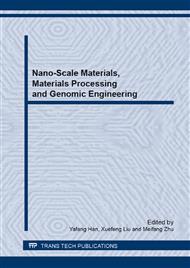p.603
p.608
p.616
p.622
p.627
p.633
p.638
p.642
p.647
Fractographical Investigation on High-Cycle Fatigue Behavior of Direct Aging GH4169 Superalloy
Abstract:
The present work is aimed at the fatigue crack initiation behavior of the direct aging superalloy GH4169 at 650 °C. Un-notched specimens were tested under high-cycle fatigue loading with the two stress ratios of R = 0.1 and 0.5. Fracture surfaces were examined using field emission scanning electron microscopy (FESEM). Special attention is paid to the crack initiation sites. Two microstructure features in the fatigue crack initiation regions have been observed. One is obviously the feature of the Ti (C,N)-inclusions, and the other is some kinds of facets. The analysis on the facets was carried out by using energy dispersive spectra (EDS). It was found that the elements at the facets are similar to the matrix. However, some inclusions, Nb (C,N), have been found in the subsurface facets in a few specimens. Sometimes, fatigue lives of the specimens for the crack initiating from the inclusions are longer than those of cracks from the facets, depending on the size of inclusions and the depth from sample surface. Crack initiation for most of the specimens occurs at inclusions, and therefore inclusion is a primary source of crack initiation for this alloy.
Info:
Periodical:
Pages:
627-632
Citation:
Online since:
April 2014
Authors:
Keywords:
Price:
Сopyright:
© 2014 Trans Tech Publications Ltd. All Rights Reserved
Share:
Citation:


